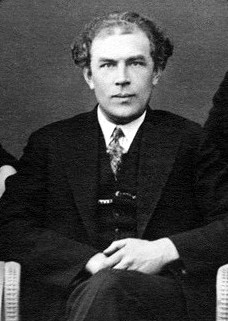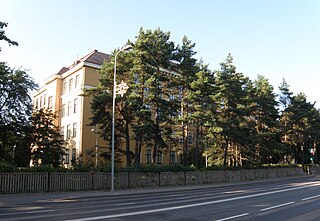

Metsakalmistu (English: Forest Cemetery) [1] is a cemetery in the Pirita district of Tallinn.


Metsakalmistu (English: Forest Cemetery) [1] is a cemetery in the Pirita district of Tallinn.
Metsakalmistu was originally planned to be a public central city cemetery. Eduard Vilde was the first to be buried in 1933. The original area of the cemetery was 24.2 hectares, but it has since expanded to 48.3 hectares.
Metsakalmistu was officially opened in 1939. That same year, 15 people were buried in the cemetery. [2] In 1939, the nearby Kloostrimetsa Farm cemetery was created, which eventually, through expansion, became part of an expanded Metsakalmistu.
At first, the designers of the cemetery were unanimous about the general design requirements of the cemetery, but the area was still dominated by the appearance of a wild forest. Initially, there was placement of crosses, girders, ranks, and calcareous stones, the largest size of which were 80 × 50 cm. Subsequently, the use of natural barriers, such as grass slabs, were built and have been extended to include a moss bed cover, along with borders marked by flowers. Monumental gravestones were not recommended initially for the cemetery, but they still exist to a small extent. At present, the permissible maximum height for a pillar is 1.5 m.
The main chapel of Metsakalmistu was built in 1936, with its main architect being Herbert Johanson. The chapel was vandalized by the Soviet Union after the establishment of the Estonian SSR, but in 1996, it was restored with the support of the Tallinn City Government. In 2006, a columbarium was built.
Tombstones in Metsakalmistu are reserved for notable Estonian people involved in, among other professions, theatre, sports, composing, writing, the arts, journalism, medicine, architecture, and science, as well as other public figures; those who were soldiers in the Finnish Infantry Regiment 200, as well as the veterans of the Estonian War of Independence, are also buried here. [3]
The recorded history of music in Estonia dates as far back as the 12th century.

Heino Eller was an Estonian composer and pedagogue, known as the founder of contemporary Estonian symphonic music.
The Estonian Academy of Music and Theatre began as a mixed choir of the Estonia Society Musical Department (EMD) on the eve of World War I. The assembly of the Estonia Society created the Tallinn Higher Music School on November 17, 1918. The opening ceremony took place on September 28, 1919. In 1923 the educational institution was renamed the Tallinn Conservatoire. In 1938 the State Drama School was opened. In 1993 the school was renamed the Estonian Academy of Music. In 1995 the Drama Faculty was renamed the Higher Theatre School.

The following is an alphabetical list of articles related to the Republic of Estonia.

Tallinn Music High School was a special music high school in Tallinn, Estonia.
100 great Estonians of the 20th century is a list of notable Estonians compiled in 1999 by Eesti Entsüklopeediakirjastus, Eesti Päevaleht, National Library of Estonia, Radio Kuku, and TV3.
Kersti Heinloo is an Estonian stage, film and television actress who began her career in radio.
Meeli Sööt was an Estonian stage, television, radio and film actress.
Sophie Sooäär was an Estonian stage, television, and film actress and singer and dancer.
Ülo Õun was an Estonian sculptor whose career began in the late 1960s and came to prominence in the 1970s. Õun mainly worked as a portrait and figural sculptor and was known for his works in colored plaster and bronze.
This is a list of the members of the Riigikogu, following the 1992 election.
Honored Teacher of the Estonian SSR was an honorary title in the Estonian SSR, which the Presidium of the Supreme Council of the Estonian SSR awarded to teachers from 1945 to 1989.
Vigased pruudid is an Estonian feature-length comedy film made in 1929 based on Eduard Vilde's story of the same name. The film was directed by Johannes Loop and Konstantin Märska. A few minutes of excerpts from the film have been preserved.